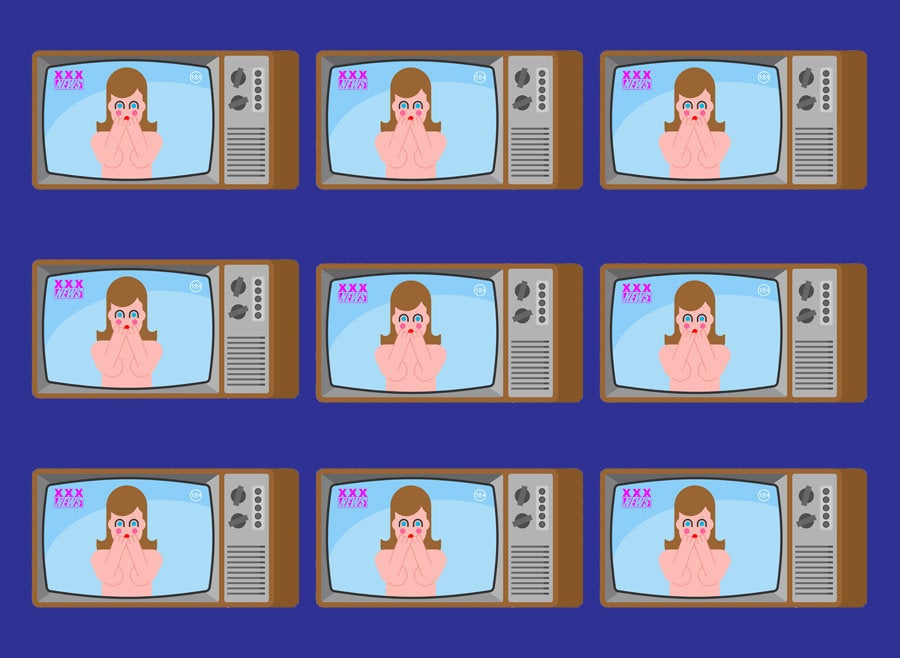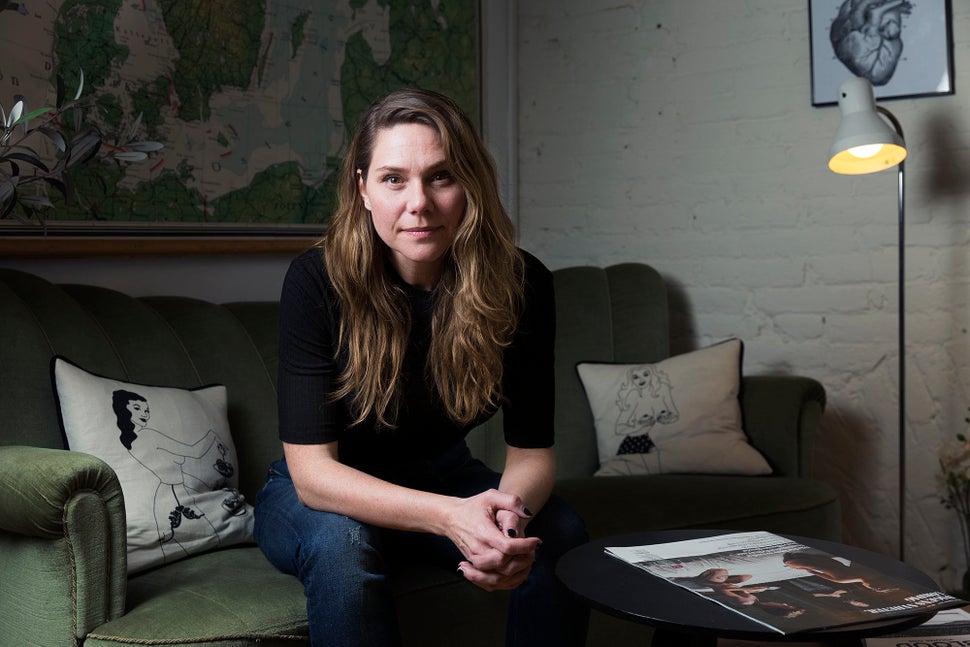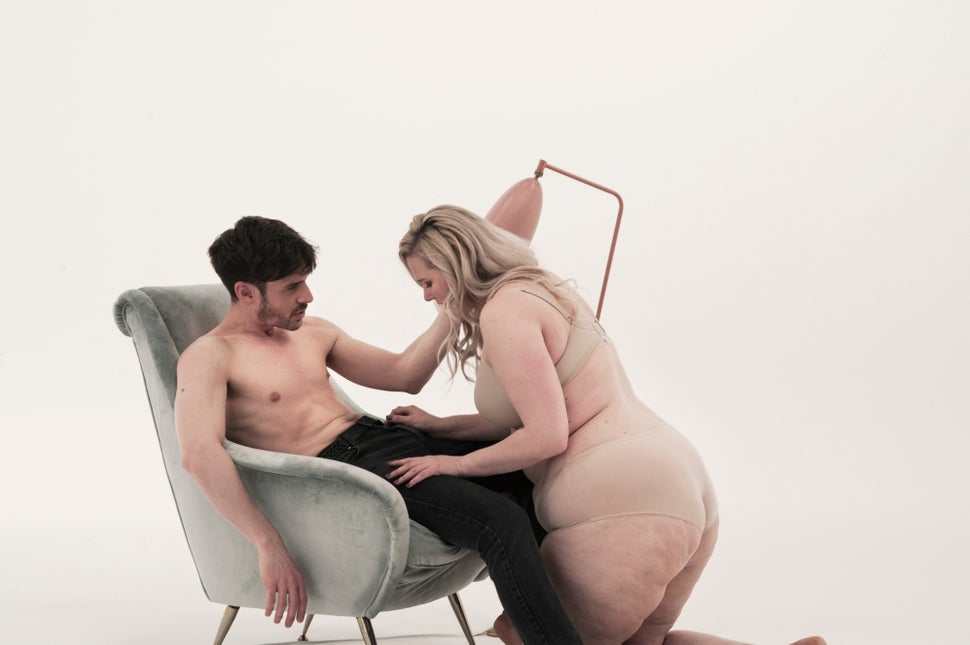
Like lots of women, Sarah*, 27, often talks to her girlfriends about sex – how much they’re getting, the surprises, the let-downs, the tips. But, also like lots of women, she’s lost count of the number of stories shared about sex that has left them uncomfortable.
Aged 15, a friend told her about a boyfriend who repeatedly called her a “dirty slut” because he’d heard men doing it online. Sarah’s own boyfriend at the time tried to pressure her into having anal sex on several occasions – she refused, broke up with him, and hoped her sex life would improve as she got older.
Truthfully, there’s been little improvement. During a recent one night stand, a man forced Sarah’s head down and pulled her hair during oral sex, making her gag. When she questioned his behaviour, he said he thought women enjoyed physical force. At least the women in the porn he watched did.
“There is a total lack of regard for me reaching orgasm,” Sarah says of other men she has met who either don’t understand – or don’t care, she suggests – about mutual pleasure. “I had a couple who just rolled over and switched the light off when they were done. It made me feel like I was just the same as their laptop screen.”
[Read More: Porn block law stalled by six months after the government ‘failed to notify the European Commission’]

It’s not that women don’t use porn. The website xHamster has reported a massive rise in their viewership, with women making up 30% of its customers worldwide in 2019. But a new survey by relationship charity Relate found 47% of therapists report an increase in the number of clients of all genders (and none) who say pornography is causing problems in their sex lives.
For some, it’s triggering anxiety about body image; for many others, it’s creating a disconnect over what is reasonable to expect someone else to want to do in the bedroom. Passion between partners is being replaced by pressure: whether that’s a pressure to perform or to enjoy something that just doesn’t feel right.
Counsellor Peter Saddington tells HuffPost UK he’s seen this increase first hand, in his own caseload and in the clients of therapists he supervises at a centre in the Midlands. “A couple of years ago very few people came to us to talk about porn,” says Saddington, who estimates that 40% of clients arriving at his door now raise pornography as an issue in their relationship or sex life. “It is coming up again and again and causing real distress.”
He’s not the only one noticing the impact. Broadcaster and psychotherapist Lucy Beresford tells me via email that she is also seeing more and more clients whose issues fall into this category. There was the young woman who was made to feel inadequate for not removing her pubic hair before getting naked, and for having size 34B breasts. Her boyfriend had become accustomed to watching women in porn who had larger chests and Brazilian waxes.
Another client came to Beresford after her boyfriend insisted the couple use prostitutes because she was unwilling, or unable, to do positions he’d seen on the internet and wanted to replicate. “She had therapy with me for several months and ended the relationship because he kept calling her frigid.”
“Your sexual template – what you like in bed, what turns you on – is formed early in your teens"”
- Peter Saddington, counsellor
For older generations, access to pornography – either online, on screen or in magazines – may have influenced their sexual experiences in adulthood, but today’s young adults have lived their entire sex lives in an age of internet porn. Those going through puberty right now are likely to have seen an encyclopedia of sex acts years before they can legally consent to any of them.
“Your sexual template – what you like in bed, what turns you on – is formed early in your teens,” says Peter Saddington. “If you’re watching porn online from the very beginning, aged 10 or 11, you can only imagine the consequences.”
Therapist Miranda Christophers says clients in their twenties and thirties are telling her their sex lives began with porn. Many were exposed to sites from as young as eight. As a result, she says, this age group has a different perspective of what is deemed ‘normal’ sex versus ‘extreme’ sex, leading to an expectation that they – or others – should be game for anything.
Emily*, 35, was recently sleeping with a man who spat on her vulva during sex to try and lubricate her. “I didn’t like it and didn’t ask for it, I can only imagine he had seen it during porn. I was so taken aback by the behaviour.” It wasn’t the first time she’d felt this way. A former partner had a fantasy about a threesome with Emily and her twin sister because of a porn storyline he’d watched.
“Porn has little or no bearing on real life sexual scenarios for the majority of people.”
- Annabelle Knight, dating expert
“I have to emphasise that these aren’t neanderthals. They’re intelligent, well-educated men who appear sensitive until you get them in the bedroom,” Emily says. “There is a real mismatch between what men think they are giving us and what they are actually doing.”
People under 30 are having to work harder to recognise porn is not real. Sex and dating expert Annabelle Knight says: “Individuals need to be aware that it has little or no bearing on real life sexual scenarios for the majority of people.” Similarly to other online windows into people’s lives – Facebook, Instagram, Twitter – just because internet porn plays out a certain way doesn’t mean sex is like that in reality.
This disconnect can mean someone’s behaviour might not have the consequences they intended. Sarah says several men she has slept with thought force was the only way to get her to orgasm. It also means that elements often missing from much porn – intimacy, emotion, female pleasure – get left out of sex in real life, too.
Saddington says men will come to him saying they want to “make love” with a partner and build a sexual relationship that centres around intimacy, but thanks to their self-taught sex education through porn, they’re at a loss about how to achieve this. “The behaviour goes against their values,” he says. “They don’t want to have forceful or violent non-consensual sex. They want intimacy and emotion.”

Erika Lust, a self-described feminist porn maker, says instead of blaming porn as a whole, we should look to the explosion in free hardcore content, no longer behind a paywall and found within seconds of a Google search, as the problem.
“It has completely ravaged the industry and changed how we, as a society, view porn,” she says. “This is a problem with certain acts being portrayed as the only way to have sex in porn. Face slapping, choking, spitting, etc are niche acts but they are presented by a lot of mainstream sites as a standard way to have sex. A lot of these films are made by, and for, a specific demographic of heterosexual men. This type of porn is often misogynistic and sexist, showing sex as a thing that men do to women, or that women do for men.”
“Face slapping, choking and spitting are niche acts but presented by a lot of mainstream sites as a standard way to have sex”
- Erika Lust, porn maker
Yet, the audience for porn is larger and more diverse than it’s ever been. Franki*, who is polyamorous, says she and her partners of both sexes enjoy porn as a mutually-fulfilling experience: “I’ve discovered lots of things through porn and am generally pretty sanguine about the notion of getting ideas from it too,” she says.
Viewed this way, porn can be a useful tool to expand your sexual horizons, to experience new things, to push the boundaries of your sexuality in a safe space. Porn that is inclusive, diverse, acknowledges female pleasure and emotion, can help not hinder, say its producers and fans.

The problem arguably lies in the gap between porn and reality. “The thing that pornography shows is sex without the everyday hiccups and normality that happen, body hair, cramp, funny noises, an awkward position, the phone ringing and interrupting, the baby waking up,” says psychosexual therapist Kate Moyle. “This can be challenging particularly for people in the earlier stages of their sex lives as it can create expectations of perfection.”
And this expectation isn’t just affecting women. Peter Saddington tells HuffPost UK that his male counselling clients are increasingly suffering anxiety around body image and performance, fuelled by the men they see naked on the internet.
Not only do some feel embarrassed by the size or shape of their bodies and genitals, or by not having the endurance of porn stars; they are also worried about not getting turned on by what they see as ‘normal’ sexual acts because of the behaviour and treatment of women they have witnessed online. Relate say almost a quarter (24%) of its therapists are seeing male clients experiencing erectile dysfunction, a number that has grown directly with their access to porn.
Pornography is not going anywhere, so instead of ignoring it, say the experts, we need to learn to work with it. Beresford believes that communication is key. She suggests a ‘We Watch’ policy, where partners bring it into their joint sex life, instead of watching it alone or pretending the other person doesn’t watch it. Coupled with an honest and frank discussion, this tactic can bring some couples closer together through the shared experience, she says.
[READ MORE: How To Talk About Porn With Your Partner]
And that same honesty should be applied to sex education, experts tell HuffPost UK, especially given that young people are susceptible to unrealistic imagery, which can go on to shape the sexual habits of a lifetime. Moyle argues that currently sex ed in the UK is insufficient. “When we don’t educate about the gap between pornography and real life sex,” she says, “we can transpose ideas of one onto the other, often without really realising it.”
* Some names have been changed.